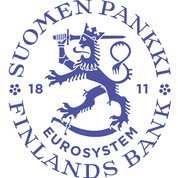Population ageing and rising public debt are setting a high bar for economic policymaking

The Finnish economy is making a swift recovery from the pandemic. The powerful monetary and fiscal policy measures have helped to prevent a significant and long-lasting shortfall in aggregate output. It has been averted in spite of the sharp decline in output experienced at the beginning of the pandemic and the repercussions still being felt by many businesses and households.
The long-term prospects for the Finnish economy are being weighed down by weak productivity growth compared with past decades, a low employment rate by Nordic standards, and an ageing population. These are factors that constrain the output of the economy and hence the debt-servicing capacity of the public sector.
The productivity slowdown is related to low levels of investment. ‘Finland's weak productivity growth suggests that we need to foster stronger incentives for innovation. One effective solution would be a wide and permanent tax relief for R&D. As for skills, the worrying decline in the average level of educational attainment of young adults is a trend that needs to be reversed,’ noted Bank of Finland Governor Olli Rehn.
The Finnish economy has fallen well behind its Nordic peers during the past fifteen years. ‘Finland can close the gap to the other Nordic countries by enacting economic reforms, and it is crucial that we improve our economy's ability to adapt to changes in the environment. There is still work to be done to shore up Finland's employment rate to a good Nordic level,’ summarised Governor Rehn.
The level of general government debt has grown rapidly during the pandemic, and it is to be expected that public debt will continue to grow even after the acute phase of the crisis. ‘As better cyclical conditions and economic growth are forecast for next year, fiscal policy ought to be steered in a direction that promotes the sustainability of the public finances. A return to central government spending limits without undue delay is key both for the sustainability of the public finances and for the credibility of the spending limits framework’, stated Governor Rehn.
Economic activity in the euro area is recovering as the pandemic recedes. Business and consumer confidence have improved markedly. Inflation has increased due to one-off and temporary factors and higher energy prices, but there are currently no signs of a rise in broader price pressures in the euro area. The COVID-19 situation continues to loom over the euro area outlook, and economic slack remains high.
The ECB Governing Council decided at its June 2021 meeting that it would continue to conduct net asset purchases under the pandemic emergency purchase programme at least until the end of March 2022 and, in any case, until it judges that the pandemic crisis phase is over. ‘Pandemic emergency purchases will be conducted in a flexible manner to help counteract the disinflationary effects of the pandemic and support growth. Accommodative financing conditions are a key element in supporting the recovery of the euro area economy,’ clarified Governor Rehn.
Keywords
Images
Links
About Suomen Pankki
The Bank of Finland is the national monetary authority and central bank of Finland. At the same time, it is also a part of the Eurosystem, which is responsible for monetary policy and other central bank tasks in the euro area and administers use of the world’s second largest currency – the euro.
Subscribe to releases from Suomen Pankki
Subscribe to all the latest releases from Suomen Pankki by registering your e-mail address below. You can unsubscribe at any time.
Latest releases from Suomen Pankki
Referensränta och dröjsmålsräntor enligt räntelagen för tiden 1.1–30.6.202622.12.2025 13:30:00 EET | Pressmeddelande
Referensräntan enligt 12 § i räntelagen (633/1982) är 2,5 % för tiden 1.1–30.6.2026. Dröjsmålsräntan för denna period är 9,5 % per år (referensräntan med tillägg för sju procentenheter enligt 4 § i räntelagen). Den dröjsmålsränta som tillämpas i kommersiella avtal är 10,5 % per år (referensräntan med tillägg för åtta procentenheter enligt 4 a § i räntelagen).
Korkolain mukainen viitekorko ja viivästyskorot 1.1.–30.6.202622.12.2025 13:30:00 EET | Tiedote
Korkolain (633/1982) 12 §:n mukainen viitekorko ajanjaksona 1.1.–30.6.2026 on 2,5 %. Viivästyskorko tänä ajanjaksona on 9,5 % vuodessa (viitekorko lisättynä korkolain 4 §:n mukaisella 7 prosenttiyksikön lisäkorolla). Kaupallisiin sopimuksiin sovellettavaksi tarkoitettu viivästyskorko on 10,5 % vuodessa (viitekorko lisättynä korkolain 4 a §:n mukaisella 8 prosenttiyksikön lisäkorolla).
Reference rate and penalty interest rates for 1 January – 30 June 202622.12.2025 13:30:00 EET | Press release
The reference rate under section 12 of the Interest Act (633/1982) for the period 1 January – 30 June 2026 is 2.5 %. The penalty interest rate for the same period is 9.5 % pa (under section 4 of the Act, the reference rate plus seven percentage points). The penalty interest rate applicable to commercial contracts is 10.5 % pa (under section 4 a of the Act, the reference rate plus eight percentage points).
Det är inte läge att skjuta upp lösningarna för Finlands offentliga finanser19.12.2025 11:00:00 EET | Pressmeddelande
Finlands offentliga finanser befinner sig alltjämt långt från balans. För att vända skuldsättningsutvecklingen krävs en betydande konsolidering av de offentliga finanserna och investeringar i tillväxt. Höjningen av de nödvändiga försvarsutgifterna försvårar den offentligfinansiella konsolideringen. Inflationen i euroområdet ligger på målet och ekonomin har vuxit något snabbare än förutsett.
Suomen julkisen talouden ratkaisuja ei kannata lykätä19.12.2025 11:00:00 EET | Tiedote
Suomen julkinen talous on edelleen kaukana tasapainosta. Velkaantumiskehityksen kääntäminen vaatii merkittävää julkisen talouden sopeuttamista ja investointeja kasvuun. Välttämättömien puolustusmenojen kasvattaminen vaikeuttaa tasapainottamista. Euroalueella inflaatio on tavoitteessa ja talous on kasvanut hieman ennustettua paremmin.
In our pressroom you can read all our latest releases, find our press contacts, images, documents and other relevant information about us.
Visit our pressroom

